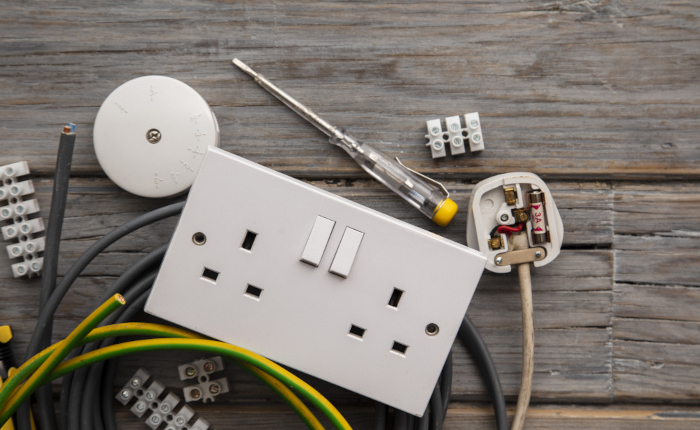Electrical Plug Wire Colours (UK)
If you’re about to use, repair or replace an electrical appliance, it helps to have a basic understanding of the colour codes associated with electric wires. Knowing which wire does what and where it should go is important for safety, so learn which colours the different wires mean on power cords and plugs. So what are the Plug Wire colours?
In the UK, there are specific colours used to denote what type of wire is being used in a plug. The colours may differ depending on the appliance but typically they’ll follow this colour code:
Brown – Live Wire
Blue – Neutral Wire
Green/Yellow – Earth Wire
Black or Grey – Switched Live Wire
Safety First
When it comes to electrical plugs and wires, the colours used for wiring can have significant implications in terms of safety. Knowing what each colour wire does is critical when handling electrical wiring. It is important to familiarise yourself with the basic colour code for residential wiring which includes black, white, red and green or bare copper voltages. Ensure power to the outlet you are working on is disconnected before beginning any electrical work. Confirm this by placing some tape over the switch in the breaker box and use a voltage tester or meter.
UK Wire Colours – Plug Wire Colours
Brown/Red – Live Circuit Wire.
Brown and red wires affect the live circuit, which is the part of the wiring system that provides power to the appliance. Connection of a brown wire to an appropriate terminal, either directly or through a plug and socket, is crucial for making sure most electrical appliances receive power. Red wires are also used for live circuits in some cases, but not always.
Blue/Black – Neutral Circuit Wire.
Blue/Black wire is used to carry the electric current back to the consumer unit or fuse box after the appliance has been powered. This prevents electric shocks and ensures that your appliance stays safe while in use. Connecting this wire to the appropriate terminal will allow you to use the appliance without any risk of a shock.
Yellow/Green – Earth’s Protective Wire.
The yellow/green wire is known as the Earth or protective wire and is essential for electrical safety. By connecting this wire to the right terminal, you will ensure that your appliance is protected against any potential electric shocks. Often the green/yellow cable is physically thicker than the other two, making it easier to identify in an electrical circuit.
If you find wire colours in UK wiring different to the above you should consult an electrical professional. Different plug wire colours could indicate a non-comforming electrical installation.
Electrical Appliance Safety Tests
PAT testing is performed using a device known as a Portable Appliance Tester (PAT). This device checks the electrical safety of appliances against certain criteria, such as: insulation resistance, earth continuity, correct polarity and/or current leakage. It also performs a visual inspection to look for any obvious signs of damage or deterioration.
The results of the tests are recorded and then assessed. If any faults are found, the appliance must be repaired or replaced before it can be used again. After repairs have been made, the PAT test should be repeated to ensure that the item is now safe for use.
PAT testing is an important part of ensuring electrical safety in homes and businesses. It is important to ensure that all electrical appliances are tested regularly to help prevent fires, electric shocks, and other injury. PAT testing should be carried out by a qualified engineer with the right knowledge and experience to ensure accuracy and safety.
PAT testing can provide peace of mind that your electrical items are safe for use, helping you to maintain a safe and secure environment. Regular testing is important to ensure that your appliances remain in good working order and are compliant with current regulations.
By keeping up to date with PAT testing, you can help protect yourself, your family, your customers and employees from the risks of electrical hazards. It’s an essential part of keeping your workplace safe.




